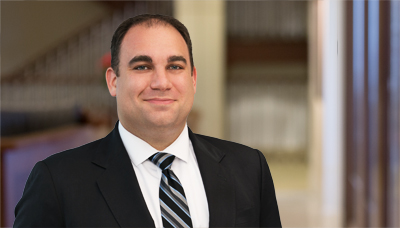On July 29, 2015, Illinois enacted Public Act 99–0178, adding a new Section 38.1 (770 ILCS 60/38.1) to the Illinois Mechanics’ Lien Act (the Act). Section 38.1 authorizes interested parties in a mechanics’ lien dispute to petition for an order substituting an eligible surety bond for any lien rights arising in (1) the improved real property, and (2) the money or other consideration due or to become due from the owner to the general contractor. Section 38.1 therefore introduces the concept of “bonding over” mechanics’ liens in Illinois and provides a needed mechanism to clear clouds on title resulting from bona fide payment disputes. However, Section 38.1 provides additional remedies, such as mandatory prevailing-party attorneys’ fees, that must be considered carefully before deciding to bond over. P.A. 99–0178 will take effect on January 1, 2016.
Eligibility Requirements
The right to file a petition for a particular lien claim arises at the earliest of (A) service of a subcontractor’s 90-day notice under Section 24 (770 ILCS 60/24), (B) the recording of a general contractor’s lien claim; or (C) the filing of a suit to foreclose a mechanics’ lien by either the contractor or subcontractor. Notably, the statute is silent regarding the common situation where a subcontractor records a claim for lien but has not complied with the Section 24 service requirements for a 90-day notice. As written, Section 38.1 does not appear to authorize a petition in this circumstance until the subcontractor either serves a proper 90-day notice or files a foreclosure action under Section 28 of the Act (770 ILCS 60/28).
Section 38.1(a) sets out who may petition to substitute an eligible surety bond in place of a mechanics’ lien. The universe of parties who may file the petition is broad and includes any owner, lien claimant or other person having an interest in the property against which a mechanics’ lien is asserted. The statute also authorizes any person who may be liable for the payment of a lien claim to file a petition, such as a former owner or non-liening contractor that is in a payment dispute with a liening subcontractor. Finally, the statute authorizes an owner association that is organized under any statute to file a petition.
Section 38.1(a) also defines the criteria for a bond to constitute an eligible surety bond under the Act. The bond must be in an amount equal to 175 percent of the lien claim and shall state that any judgment in favor of the lien claimant based on the lien claim “shall constitute a judgment against the principal and surety of the bond for the amount found due to the lien claimant, including interest and attorney’s fees, limited as to the principal and surety to the full amount of the bond.” The surety must also meet listed certification and financial-strength requirements. Further, if the judicial circuit with jurisdiction over the property maintains its own list of approved sureties, the surety must be selected from that approved list.
The Petition to Substitute an Eligible Surety Bond
The procedure to file a petition is straightforward, and the only issue to be decided in such a proceeding is whether the eligibility requirements contained in Section 38.1 have been met. The petition must be verified and must contain all of the facts and exhibits listed in Section 38.1(c) of the Act. If the lien claimant filed a complaint or counterclaim to enforce its lien prior to the date a petition is filed, the petition must be filed no later than five months after the lien claimant’s filing of its complaint or counterclaim.
The petition is filed in the circuit court of the county in which the subject property is located. The petitioner must prepare a notice in the form specified by Section 38.1(d) and serve both the petition and notice either personally or by certified mail, return receipt requested. The petition and notice are served on every person whose name and address is stated in the petition. Arguably, this service obligation requires a petitioner to serve itself; however, it remains to be seen if the statute is construed to require such service.
The parties named in the petition must file any objections within 30 days of service or 33 days after the notice and petition are mailed by certified mail, whichever is earlier. Objections are waived unless filed within this period. If no objections are filed, the petitioner may proceed ex parte to establish that the proposed bond meets the eligibility requirements of Section 38.1(a). If an objection is filed, the petitioner must set a hearing with notice to all parties served with the petition, and the court will determine whether the proposed bond is an eligible surety bond under the Act.
Once the petitioner establishes that the proposed surety bond is an eligible surety bond under the Act, the bond will be substituted for the property securing the lien claim. The court will also enter an order substituting the lien claimant’s right to recover on the bond for the lien claimant’s causes of action pursuant to Sections 9, 27, or 28 of the Act. The order does not affect any cause of action that the lien claimant may bring outside of the Act.
Important Considerations Before Bonding Over
While bonding over will provide an important new tool for an owner or other interested party to remove a cloud from title without protracted litigation, a party considering this procedure should carefully consider the consequences of providing a bond under the new Illinois procedure.
Foremost, Section 38.1 imposes mandatory prevailing-party attorneys’ fees in an action to recover on the bond. A lien claimant is deemed to be a prevailing party if the final judgment amount is at least 75 percent of the lien claim, and the party that petitioned for the bond is a prevailing party if the final judgment is equal to or less than 25 percent of the lien claim. In all other cases, neither party will be deemed a “prevailing party” for purposes of awarding attorneys’ fees. Under prior law, which is not affected unless a party invokes Section 38.1, an attorney-fee award cannot be entered against any party other than the owner or the lien claimant. Further, the Act did not allow attorneys’ fees to be added to the judgment unless the court found, in its discretion, that the owner or lien claimant acted without just cause or right. These limitations do not apply to an action on the bond under the new statute.
Next, Section 38.1(i) provides that “the principal and surety . . . shall be jointly and severally liable to the lien claimant for the amount that the lien claimant would have been entitled to recover under this Act if no surety bond had been furnished, subject to the limitation of liability of the surety to the face amount of the bond.” Therefore, it is possible that a party invoking Section 38.1 will become personally liable where no personal liability previously existed.
Finally, Section 38.1 may cause unintended consequences for general contractors. If a general contract requires the contractor to bond over liens filed by sub-subcontractors or material suppliers with whom they do not have a direct contract, that contractor risks becoming personally liable to a lower-tier lien claimant for the amount of the lien, plus attorneys’ fees and interest. Contractors should consider carefully any such contract requirement in light of the above provisions, and should understand the additional risks such a requirement could impose.
To obtain more information regarding this alert, contact the Barnes & Thornburg attorney with whom you work or a member of our Construction Law Practice Group: Gregory Gistenson at 312-214-4573 or Gregory.Gistenson@btlaw.com, or Clifford Shapiro at 312-214-4836 or clifford.shapiro@btlaw.com.
© 2015 Barnes & Thornburg LLP. All Rights Reserved. This page, and all information on it, is proprietary and the property of Barnes & Thornburg LLP. It may not be reproduced, in any form, without the express written consent of Barnes & Thornburg LLP.
This Barnes & Thornburg LLP publication should not be construed as legal advice or legal opinion on any specific facts or circumstances. The contents are intended for general informational purposes only, and you are urged to consult your own lawyer on any specific legal questions you may have concerning your situation.















